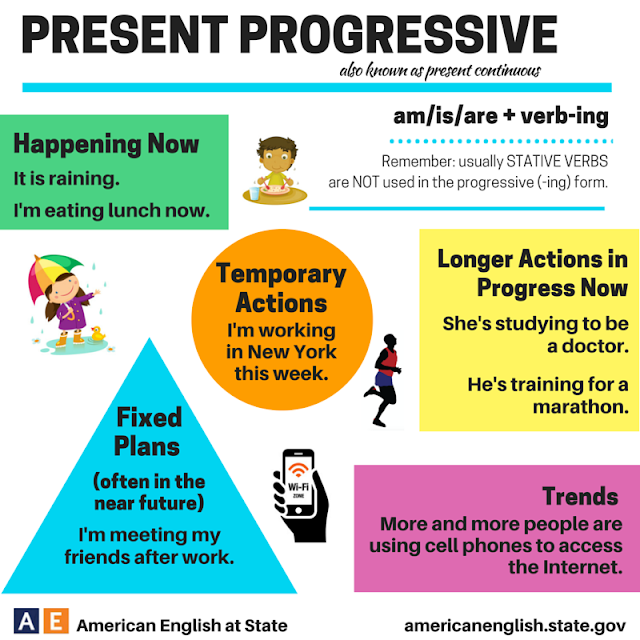martes, 23 de noviembre de 2021
miércoles, 3 de noviembre de 2021
Commonly Confused Prepositions
Commonly Confused Prepositions
Above & Over
These prepositions can be interchangeable, but the most common usage is this:
- Use above when there is no movement.
- Use over when there is movement.
Examples
- There is a painting above the sofa. (no movement)
- The chandelier hangs above the dining room table. (no movement)
- The plane flew over the building. (movement)
- The dog jumped over the log. (movement)
On
What about on? Use on when two nouns are touching (when a noun is directly on top of another noun). Use above when there is no touching.
Examples
- There is a book on the desk. (touching)
- The cat is sleeping on the bed. (touching)
- The sun is directly above our heads. (no touching)
- I see blue sky through the skylight above me (no touching).
Below & Under & beneath & underneath
These prepositions are even more interchangeable than above and over. The important thing to remember is this:
- Use under in most cases as it is much more common than “below.”
- Use below when the meaning is “less than”.
Examples
- My shoes are under the bed. (no movement, no touching)
- The saucer is under the cup. (touching)
- The boat passed under the bridge. (movement)
- It is 18 degrees below zero. (less than)
What about beneath and underneath? These prepositions are also interchangeable with under and below, though I tell my students that they are a little more formal and that under is the best choice.
Examples
- We sat under the tree. (most common/best choice)
- We sat below the tree. (less common)
- We sat underneath the tree. (a little more formal)
- We sat beneath the tree. (more formal)
Beside & Next to
In front of & Opposite
In front of refers to objects and people who are ahead of something or someone else. In other words, "in front of" refers to a progression from back to front. Someone who is in front of you is one place or space farther ahead. The antonym of "in front of" is "behind" as these examples show:
- There are 50 people in front of us in this line. I hope I get a ticket. (the 50 people all have places that are ahead of "us" in line.)
- The books are placed in front of the students on their desks. (the books are directly in front of each student, likely on top of each desk.)
Opposite refers to something that is facing another object. In other words, "opposite" refers to two objects or people who are looking at each other. The main difference between "in front of" and "opposite" is that the former refers to placement in a sequence, whereas the latter refers to things that face each other.
My house is opposite David's house. (accross from)The bank is opposite the supermarket on 5th Avenue. (accross from)






